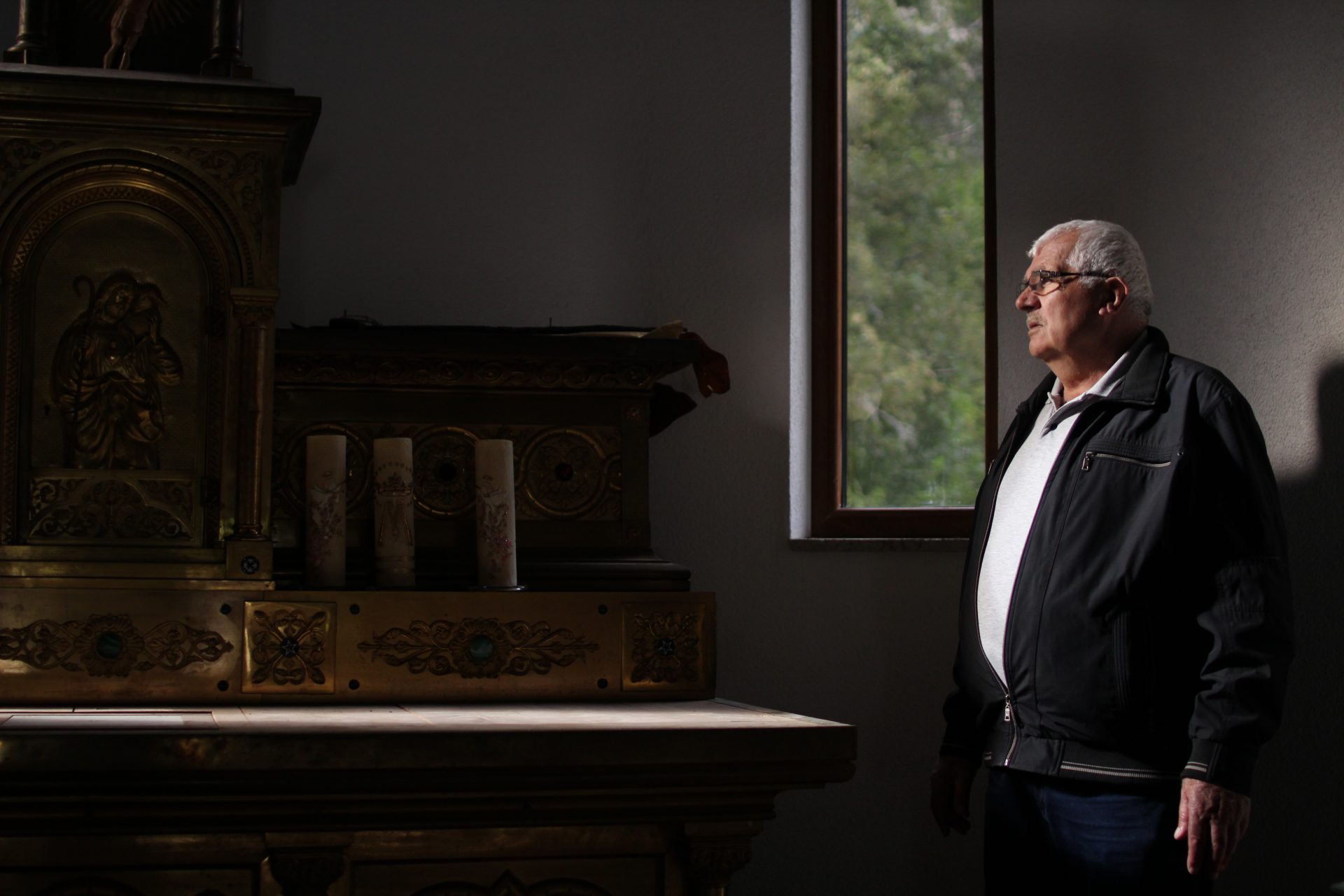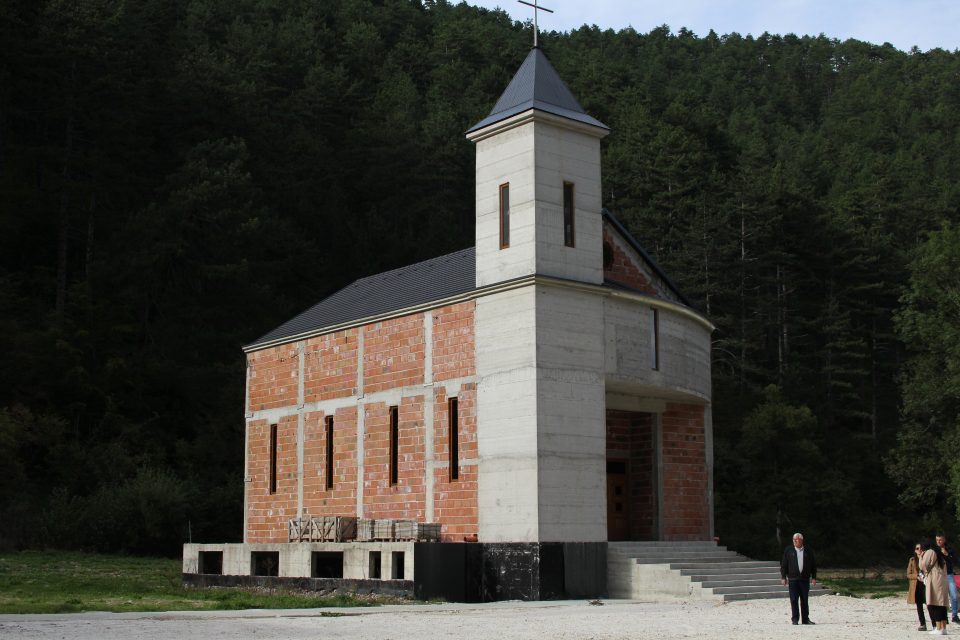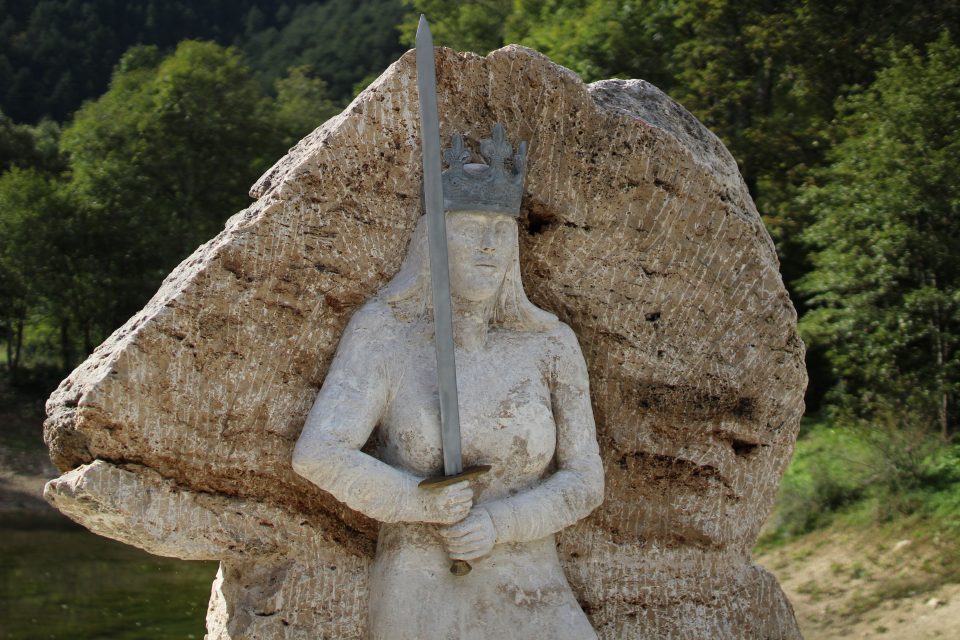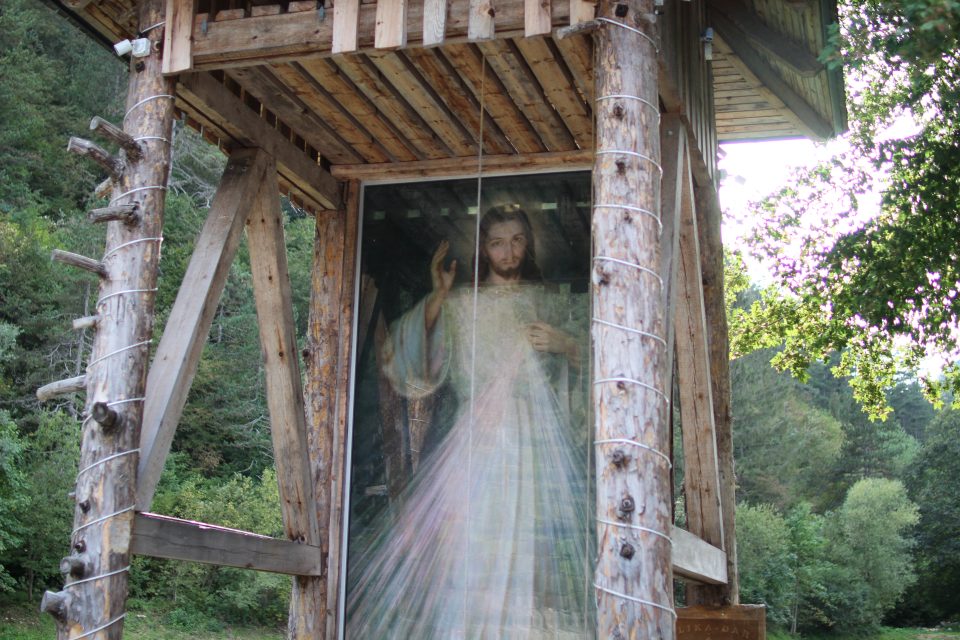
The small town of Vesela Straža near Bugojno has recently become the center of a historical treasury.
In 2014, Husein Smajlić, a resident of the town, was doing some construction work, when he happened upon the foundations of a medieval Roman Catholic church and the remains of the Bosnian queen Jelena Kotromanić Gruba from the 14th century. In the spirit of that period, he built the church of Gospa od Anđela [Our Lady of the Angels] on his land, which is open to believers and visitors.
“I call it the Church of peace, love, tolerance and respect among people. The Church is here to be respected,” said Smajlić. He explained that he mostly financed its construction himself, but he also received donations from many people, including Serbs and Bosniaks, as well as help from the Mayor of Bugojno, who issued the construction and urban planning permit.

He has already had a bust of Queen Jelena Kotromanić Gruba built and has plans to build a museum in the future. The gallery would contain the other things he found, including gold, jewelry, four gold Venetian coins, stone sculptures from the basement, and a baptismal font.
“The truth about history must be heard. It’s a known fact that Bosnia and Herzegovina existed at that time, so the existence of Bosnia and Herzegovina shouldn’t be denied. Certainly, our young people will come here, learn from these foundations, from their elders, and visit the bust of our only female to sit on the throne. She is the only queen to have a seal and a crown on her head that had been worn by her previous husband Stjepan Dabiša,” Smajlić explained.

Gold, Silk, and Royal Velvet
The skeletal remains of the queen were excavated with the help of archeologists Ljuba Oreč, Kruna Oreč, and Stipan Dilber. They were then sent to Miami, Florida in the United States, where analysts determined that she had died 1,400 years ago.
“When we found her in the tomb, she was covered in gold and silk, up to the waist, and a man was lying next to her. We also found royal velvet,” said Smajlić. After that discovery, he began to learn more about that period. Queen Jelena Gruba is known to have ruled Bosnia for three years (1395-1398), and to have come to power after Bosnian King Stjepan Dabiša.
The skeletal remains of the queen as well as 12 other sets of remains also found in the foundations of the old church are kept in the basement, in wooden coffins lined with white upholstery which Smajlić made himself.

In 2015, Smajlić was awarded the Večernjak Seal which was presented to him by the President of the Republic of Croatia. Smajlić said, “On my land in Bugojno are the foundations of the oldest Roman Catholic church. I want that church to be restored, to build it as it was, with the blessing of our Cardinal Vinko Puljić.”
Feast of Our Lady of the Angels
Half a year later, Cardinal Puljić visited the site in Vesela Straža and said that while it wouldn’t be practical to build a church on destroyed foundations, a memorial chapel should be built elsewhere.
“Then it was time to build the new memorial chapel. The cardinal came on August 2nd and then we blessed and consecrated the church. Every year on that date, we celebrate the Feast of Our Lady of the Angels,” said Smajlić.
He inherited the historically rich land from his parents, who purchased it in 1953. Today, the church is his property and the cadaster, as well as the remains of the queen. Next to the foundations of the medieval church, there is a bust of Queen Jelena Gruba, which was sculpted by Ante Braovac from Tomislavgrad. Beside the bust, there is an oil canvas painting of Jesus Christ, four and a half meters high and 2.26 meters wide, which was a gift from the municipality of Kupres in 2015.

“I decided to put a painting there and have written proof that it’s my painting, so I can say that Jesus is mine because I have the paper,” joked Smajlić. He explained that there was a painting of Jesus Christ in the same place in 1463.
Commenting on the image of Jesus Christ, he said, “I can’t look him in the eyes for even a minute, it’s like his gaze mesmerizes you.”

Smajlić didn’t want to move the historical treasure to another location because he believes that it belongs in Bugojno. Remarking on the common trope of ethnic and religious divisions, he concluded, “I see no reason why people can’t live with others, alongside one another […] it’s important whether a person is honest and good, a man’s name is the least important thing.”






